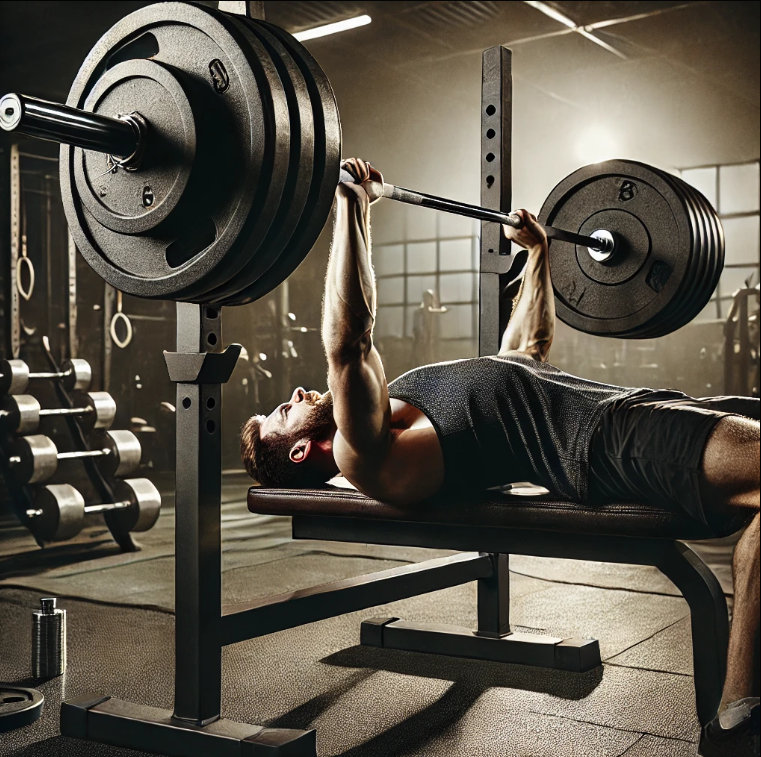Working out at home is becoming more popular as people look for flexible, time-efficient ways to stay in shape. While many think they need a gym filled with fancy machines to build a strong chest, all you really need are a pair of dumbbells and the right chest exercises to get results.
In this blog, we’ll cover seven must-try dumbbell chest exercises that you can do at home. These exercises target all areas of the chest—upper, middle, and lower—helping you build a well-rounded, strong, and defined chest from the comfort of your living room.
Why Dumbbell Chest Exercises?
Dumbbells are incredibly versatile and effective for chest exercises because they offer a greater range of motion than barbells or machines. Each arm works independently, improving muscle balance and coordination. Dumbbells also engage stabilizer muscles, which improves overall strength and functional fitness.
Whether you’re a beginner or an experienced lifter, these dumbbell exercises will give you the tools you need to build muscle and increase strength right from home.
1. Dumbbell Bench Press – The Classic Chest Builder

The dumbbell bench press is one of the most effective chest exercises for building overall chest size and strength. Unlike a barbell bench press, using dumbbells allows for a deeper range of motion, fully stretching the chest muscles and increasing muscle activation.
How to Perform:
- Lie flat on a bench (or on the floor if you don’t have a bench) with a dumbbell in each hand.
- Hold the dumbbells above your chest with your arms fully extended, palms facing forward.
- Slowly lower the dumbbells until they’re level with your chest, keeping your elbows at about a 45-degree angle.
- Push the dumbbells back up to the starting position.
Tips:
- Focus on squeezing your chest muscles as you push the dumbbells up.
- Start with lighter weights to master your form, then gradually increase the weight.
Why It Works:
The dumbbell bench press is great for hitting the middle chest and developing overall chest thickness. It’s a staple in any chest routine, whether you’re working out at home or in the gym.
2. Dumbbell Flyes – Isolate the Chest for Maximum Stretch

Dumbbell flyes are an isolation exercise that focuses on stretching and contracting the chest muscles. This exercise is perfect for building chest width and improving muscle definition.
How to Perform:
- Lie flat on a bench or on the floor with a dumbbell in each hand.
- Start with your arms extended above your chest, palms facing inward (neutral grip).
- Lower the dumbbells out to your sides in a wide arc, keeping a slight bend in your elbows.
- Bring the dumbbells back to the starting position, focusing on squeezing your chest muscles.
Tips:
- Keep the movement slow and controlled, especially when lowering the dumbbells.
- Don’t go too heavy with this exercise to avoid shoulder strain.
Why It Works:
Dumbbell flyes stretch the chest muscles in a way that presses cannot. By focusing on the eccentric (lowering) part of the movement, you can maximize muscle growth and stretch.
3. Incline Dumbbell Bench Press – Target the Upper Chest

The incline dumbbell bench press targets the upper part of your chest, which is often underdeveloped. This exercise helps build the upper chest and gives your chest a more balanced and fuller appearance.
How to Perform:
- Set your bench at a 30-45 degree incline.
- Hold a dumbbell in each hand, palms facing forward, and lie back on the bench.
- Press the dumbbells up above your chest.
- Slowly lower the dumbbells to chest level, then push them back up.
Tips:
- Use a moderate weight that allows you to maintain good form throughout the set.
- Focus on controlling the weight on the way down to fully engage your upper chest.
Why It Works:
Targeting the upper chest is key to achieving a full, aesthetic chest. The incline angle shifts the focus to the upper pecs, helping to build the often-neglected upper part of the chest.
4. Dumbbell Pullover – A Full Chest and Back Exercise

The dumbbell pullover is a unique exercise that targets both the chest and the back. While it primarily works the chest, it also engages the lats, making it a great compound movement for upper body development.
How to Perform:
- Lie across a bench (or on the floor) with only your upper back and shoulders resting on the bench.
- Hold one dumbbell with both hands, arms extended above your chest.
- Slowly lower the dumbbell behind your head in an arc motion, feeling a stretch in your chest and lats.
- Pull the dumbbell back to the starting position above your chest.
Tips:
- Keep your arms slightly bent throughout the movement to protect your shoulders.
- Focus on the stretch at the bottom of the movement to maximize chest activation.
Why It Works:
The dumbbell pullover is excellent for stretching the chest and increasing the range of motion. It also engages your lats, making it a great exercise for overall upper body strength.
5. Dumbbell Floor Press – A Safer Alternative to the Bench Press

If you don’t have access to a bench, the dumbbell floor press is a great alternative. It limits the range of motion, making it a safer option for beginners while still targeting the chest, triceps, and shoulders.
How to Perform:
- Lie on your back on the floor with a dumbbell in each hand.
- Start with the dumbbells extended above your chest, palms facing forward.
- Lower the dumbbells until your elbows touch the floor.
- Push the dumbbells back to the starting position.
Tips:
- Keep your elbows tucked in slightly to reduce strain on your shoulders.
- Focus on controlling the dumbbells throughout the entire movement.
Why It Works:
The floor press limits the range of motion, which can help protect your shoulders while still providing a great chest workout. It’s an excellent option for anyone without a bench.
6. Single-Arm Dumbbell Press – Improve Muscle Imbalances

The single-arm dumbbell press is a variation of the dumbbell bench press, but it’s done one arm at a time. This unilateral exercise helps address any muscle imbalances, improving overall chest symmetry.
How to Perform:
- Lie flat on a bench or the floor with a dumbbell in one hand.
- Extend your arm above your chest.
- Slowly lower the dumbbell to chest level, keeping your core engaged.
- Push the dumbbell back up to the starting position.
Tips:
- Use a lighter weight than you would for a regular bench press to maintain control.
- Keep your core tight to prevent your body from twisting.
Why It Works:
Working one side at a time helps to strengthen weaker muscles and improve balance. It’s a great exercise for correcting muscle imbalances and improving stability.
7. Incline Dumbbell Flyes – Stretch and Build the Upper Chest

Incline dumbbell flyes are similar to flat dumbbell flyes, but the incline angle shifts the focus to the upper chest. This exercise helps develop the upper chest and improves overall muscle definition.
How to Perform:
- Set your bench to a 30-45 degree incline.
- Hold a dumbbell in each hand, palms facing inward.
- Start with your arms extended above your chest, slightly bent at the elbows.
- Lower the dumbbells out to the sides in an arc, keeping your elbows slightly bent.
- Bring the dumbbells back to the starting position.
Tips:
- Avoid going too heavy to maintain good form and prevent shoulder strain.
- Focus on a deep stretch at the bottom of the movement to maximize muscle engagement.
Why It Works:
Incline dumbbell flyes help stretch and isolate the upper chest, making them a perfect complement to incline presses for a well-rounded upper chest workout.
Structuring Your Dumbbell Chest Workout
Now that you know the top dumbbell chest exercises for home workouts, here’s how you can structure a complete chest workout:
Sample Dumbbell Chest Workout:
- Dumbbell Bench Press – 3 sets of 8-12 reps
- Incline Dumbbell Bench Press – 3 sets of 8-12 reps
- Dumbbell Flyes – 3 sets of 10-15 reps
- Incline Dumbbell Flyes – 3 sets of 10-15 reps
- Dumbbell Pullover – 3 sets of 8-12 reps
- Single-Arm Dumbbell Press – 3 sets of 8-10 reps (each side)
- Dumbbell Floor Press – 3 sets of 8-12 reps
Rest:
Take 60-90 seconds of rest between sets to ensure you’re recovering enough to maintain proper form during each exercise.
Progression:
To continue making gains, you should aim to increase the weight or number of repetitions as your strength improves. You can also adjust the incline or try different variations of the exercises to keep your muscles challenged.
Tips for Effective Home Workouts
- Warm-Up Properly: Always start your workout with a warm-up to get your muscles ready for exercise and reduce the risk of injury. Include dynamic stretches and light cardio to get your blood flowing.
- Focus on Form: Don’t rush through the exercises. Focus on proper form and control throughout each movement to maximize muscle engagement and avoid injury.
- Increase Weight Gradually: Start with a weight you can comfortably lift for 8-12 reps and gradually increase the weight as you become stronger.
- Stay Consistent: Results come with consistency. Aim to work your chest 1-2 times per week, giving your muscles time to recover in between sessions.
- Rest and Recover: Recovery is just as important as the workout itself. Make sure you’re getting enough rest, sleep, and proper nutrition to fuel muscle growth.


